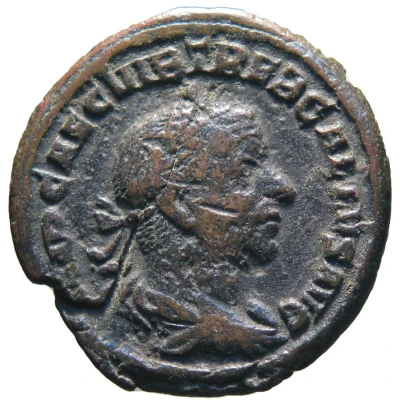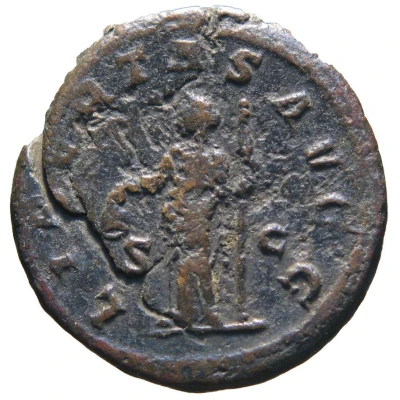


© Trustees of the British Museum
As - Trebonianus Gallus LIBERTAS AVGG S C; Libertas
| Bronze | 10.2 g | 23 mm |
| Issuer | Rome › Roman Empire (27 BC - 395 AD) |
|---|---|
| Emperor | Trebonianus Gallus (Gaius Vibius Afinius Trebonianus Gallus) (251-253) Volusianus (Gaius Vibius Volusianus) (251-253) |
| Type | Standard circulation coin |
| Years | 251-253 |
| Value | As (1⁄32) |
| Currency | Antoninianus, Reform of Caracalla (AD 215 – 301) |
| Composition | Bronze |
| Weight | 10.2 g |
| Diameter | 23 mm |
| Shape | Round (irregular) |
| Technique | Hammered |
| Demonetized | Yes |
| Updated | 2024-10-05 |
| Numista | N#283634 |
|---|---|
| Rarity index | 100% |
Reverse
Libertas, draped, standing left, holding pileus in right hand and sceptre in left hand.
Script: Latin
Lettering: LIBERTAS AVGG S C
Translation:
Libertas Duorum Augustorum. Senatus Consultum.
Freedom of the two emperors (Augusti). Decree of the senate.
Comment
Mass varies: 9.43–10.92 g;Example of this type:
Trustees of the British Museum
Source:
Online Coins of the Roman Empire (OCRE)
Interesting fact
One interesting fact about the Trebonianus Gallus coin is that it features the goddess Libertas, who was a symbol of freedom and liberty in ancient Rome. The coin's design includes a depiction of Libertas holding a liberty torch and a scepter, which represents her authority and power. This coin was minted during a time of great turmoil in the Roman Empire, and the image of Libertas was meant to symbolize the empire's commitment to freedom and democracy. Despite the challenges faced by the empire during this period, the coin remains a testament to the enduring spirit of Roman culture and the importance of liberty in the ancient world.